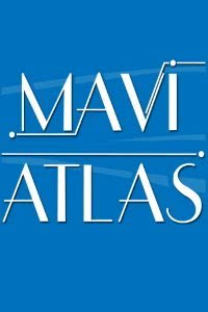MARIUS OUTREY’NİN 1835 YILINDA TRABZON’DAN ERZURUM’A SEYAHATİ VE ERZURUM ŞEHRİ HAKKINDA RAPORU
A REPORT OF MARIUS OUTREY ON THE TRAVEL FROM TRABZON TO ERZURUM AND ON THE CITY OF ERZURUM IN 1835
___
Archives du ministère des Affaires étrangères (AMAE), Centre des Archives diplomatiques de Nantes, (CADN), Archives des postes diplomatiques, (APD), Constantinople (Ambassade), Série D. Trébizonde, Tome III. B. Diğer KaynaklarBİLİCİ, Faruk (2003). “La France et la mer Noire sous le Consulat et l’Empire : « la porte du harem ouverte », Méditerranée, Moyen-Orient : deux siècles de relations internationales, recherches en hommages à Jacques Thobie (dir. W. Arbid, S. Kançal, J.- D Mizrahi, S. Saul), Paris : L’Harmattan : 655-676.
FONTANIER, Victor (1834). Voyages en Orient, entrepris par ordre du gouvernement français de 1830 à 1833, deuxième voyage en Anatolie, Paris: Librarie de Dumont. http://www.levantineheritage.com/pdf/Consuls_of_the_Dardanelles.pdf (Ekim 2016)
ISSAWI, Charles (1970). “The Tabriz-Trabzon Trade, 1830–1900: The Rise and Decline of A Route”, International Journal of Middle East Studies, I: 18-27.
ISSAWI, Charles (1980). The Economic History of Turkey 1800-1914, Chicago: The University of Chicago Press.
OUTREY, Marius (1860). Dictionnaire de toutes les localitées de l'Algérie, Paris. TURAN, Şerafettin (1951). “1829 Edirne Antlaşması”, Ankara Üniversitesi DTCF Dergisi, IX/1-2: 111-151.
TURGAY, A. Üner (1983). “Ottoman-British Trade Through Southeastern Black Sea Ports During the Nineteenth Century”, Economie et Sociétés dans L’empire Ottoman (fin du XVIIIe- début du XXe siècle), der. J.-Louis Bacqué-Grammont, P. Dumont, Paris : Editions du Centre national de la recherche scientifique, pp. 297-315.
TURGAY, A. Üner (1994). “Trabzon”, Doğu Akdeniz’de Liman Kentleri, çev. Gül Çağalı Güven, ed. Ç. Keyder, Y. E. Özveren, D. Quataert, pp. 45-73, İstanbul: Tarih Vakfı Yurt Yayınları.
TURGAY, A. Üner (1982). “Trade and Merchants in Nineteenth-Century Trabzon: Elements of Ethnic Conflict”, Chiristians and Jews in the Ottoman Empire, Volume 1, ed. B. Braude-B. Lewis, pp. 287-313, New York.
YILMAZ, Özgür (2013). “19. Yüzyılda Trabzon’da Fransız Ticareti ve Yatırımları. Karadeniz İncelemeleri Dergisi, 15: 39-76.
YILMAZ, Özgür (2014). “Victor Fontanier’nin Trabzon Konsolosluğu (1830-1832)”, OTAM, 35:153-195.
YILMAZ, Özgür (2015). “Erzurum Fransız Konsolosu Challaye’nin Kırım Savaşı Döneminde Askeri İstihbarat Faaliyetleri (1853-1854)”, History Studies, 7(4): 157-174.
- ISSN: 2148-5232
- Yayın Aralığı: 2
- Başlangıç: 2013
- Yayıncı: Gümüşhane Üniversitesi Edebiyat Fakültesi
Divan Şairlerinin Şiirle İlgili Benzetme ve İstiâreleri
MARIUS OUTREY’NİN 1835 YILINDA TRABZON’DAN ERZURUM’A SEYAHATİ VE ERZURUM ŞEHRİ HAKKINDA RAPORU
Maarif Yıllıklarına Göre Cumhuriyet’in İlk Çeyreğinde Gümüşhane’de Eğitim (1923-1950)
POLONYALI BİR SUBAYIN TÜRKİYE MEKTUPLARI
FENELON’UN “ARİSTONOUS” ADLI ESERİNİN MÜLAHHAS TERCEMESİ VE AHMED FAİK REŞÂD BEY
SİCİLL-İ AHVAL DEFTERLERİNE GÖRE GÜMÜŞHANE DOĞUMLU MEMURLAR HAKKINDA BAZI TESPİTLER
Fenelon’un “Aristonous” Adlı Eserinin Mülahhas Tercemesi ve Ahmed Faik Reşâd Bey
Polonyalı Bir Subayın Türkiye Mektupları
Trabzon Yöresi Yorgancılık Mesleğinde Sözlü Kültürün ve Türk Motiflerinin İzleri
Marius Outrey’nin 1835 Yılında Trabzon’dan Erzurum’a Seyahati ve Erzurum Şehri Hakkında Raporu
